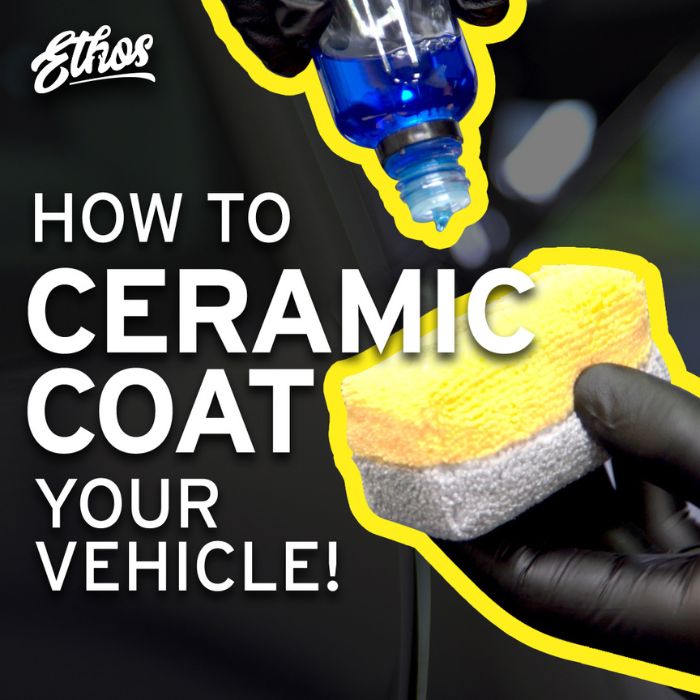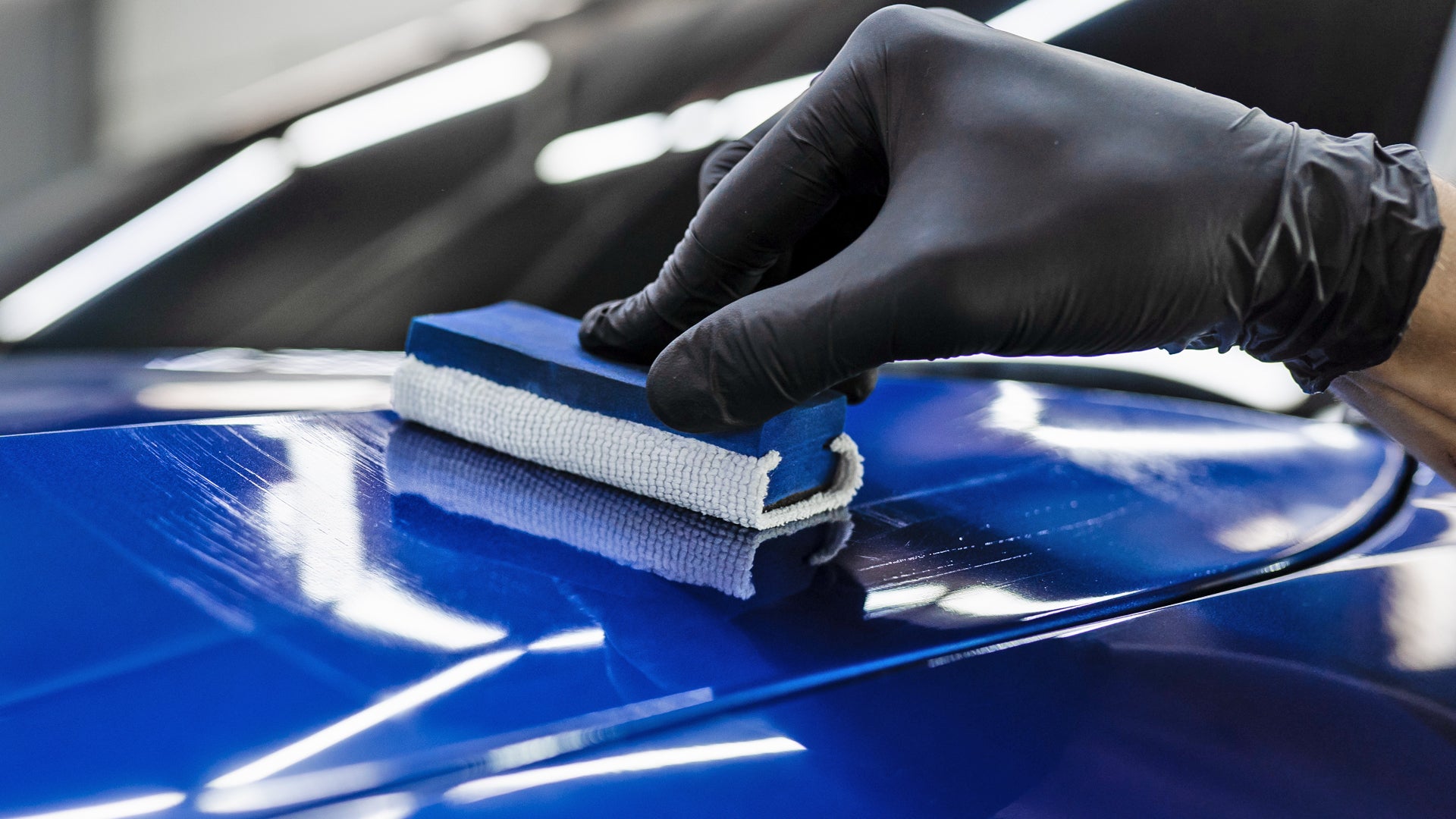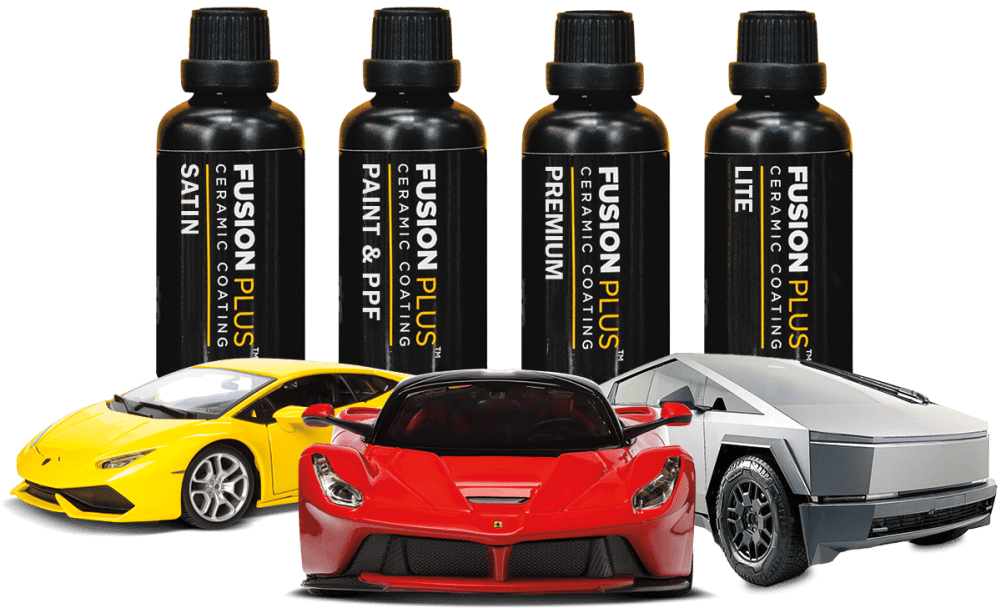Ceramic Pro: Transform Your Lorry's Protection and Aesthetics
Ceramic Pro: Transform Your Lorry's Protection and Aesthetics
Blog Article
The Scientific Research Behind Ceramic Layer: Just How It Enhances Your Automobile's Aesthetic and Toughness

Understanding Ceramic Coating Chemistry
The chemical structure of ceramic coatings plays an essential role in establishing their sturdiness and safety properties on lorry surfaces. Ceramic layers are commonly comprised of silicon dioxide (SiO2), which is a key element providing firmness and warmth resistance. Other active ingredients such as titanium dioxide, silicon carbide, and polysilazanes are usually included to boost certain buildings like UV attachment, resistance, and hydrophobicity.
Silicon dioxide, also known as silica, creates a clear and solid layer on the vehicle surface when used appropriately. This layer serves as a guard, shielding the paint from ecological contaminants, UV rays, oxidation, and chemical discolorations. Titanium dioxide aids in blocking unsafe UV rays that can create paint fading and wear and tear. Silicon carbide is known for its abrasion resistance, making the ceramic layer hard and durable against physical damages. Polysilazanes are used to improve the finish's adaptability and attachment to the automobile's surface, ensuring long-lasting security. Recognizing the chemistry behind ceramic coverings is crucial for both applicators and car owners to appreciate the worth and benefits these finishings provide in keeping the aesthetic appeal and longevity of cars.
Improved Gloss and Mirror-like Finish
Recognizing the chemical composition of ceramic finishes not only discloses their protective residential or commercial properties but additionally clarifies just how they add to achieving a boosted gloss and mirror-like coating on automobile surfaces. The secret to the shiny effect hinges on the nano-ceramic particles existing in the coating. These particles complete microscopic pores and flaws externally, creating a smooth and degree finish. As light hits the layered surface, it shows consistently, giving the look of a deep, glossy sparkle. Furthermore, the chemical structure of ceramic coatings allows them to create a solid bond with the automobile's paintwork, avoiding oxidation and maintaining the clearness of the finish over time. This bond additionally resists ecological impurities, such as dust and grime, that can dull the sparkle of the vehicle. The mix of filling up residential or commercial properties, light reflection, and resilient protection makes ceramic finishings a preferred selection for those looking for a mirror-like and vibrant finish for their cars.

Influence On Paint Protection and Durability
Ceramic coatings for cars significantly enhance the durability and defense of the paintwork. By developing a chemically immune layer on top of the lorry's clear coat, ceramic finishings act as an obstacle against various environmental impurities that can harm the paint over time.
In regards to long life, ceramic finishes offer a long lasting option contrasted to standard waxes or sealants. While waxes might last a few weeks to a couple of months, ceramic coverings can last years with proper maintenance. This extended life expectancy not just reduces the regularity of reapplications but likewise conserves effort and time in the future. On the whole, the protective residential properties of ceramic finishes contribute considerably to maintaining the car's paintwork and enhancing its aesthetic allure over an extensive duration.
Resistance to Pollutants and Extreme Components
With the protective guard supplied by ceramic coverings against various ecological contaminants and aspects, cars are able to keep their pristine appearance regardless of exposure to rough problems. Ceramic finishes develop a see strong obstacle that repels water, dust, dust, and various other typical toxins, stopping them from bonding to the automobile's surface. This hydrophobic nature not only makes cleansing easier yet likewise decreases the danger of water places and etching triggered by acidic impurities. Furthermore, the chemical resistance of advice ceramic layers helps safeguard the paint from bird droppings, insect splatter, tree sap, and other corrosive substances that can damage the coating in time.
Moreover, ceramic finishes provide UV protection, protecting the lorry's paint from the sunlight's damaging rays that can create fading and oxidation. This resistance to UV damage assists keep the color strength and shine of the paint for longer durations. By developing a durable and sturdy barrier, ceramic layers make certain that the car's exterior stays shielded versus a variety of contaminants and extreme aspects, preserving its aesthetic allure and durability.
Application Techniques and Maintenance Tips
For optimal results when applying ceramic coverings to automobiles, making use of appropriate strategies and sticking to advised upkeep practices are crucial. Prior to using the ceramic layer, it is important to thoroughly tidy and sanitize the lorry's surface area to ensure proper bond.
When using the ceramic layer, it is advised to work in tiny sections to ensure also protection and to prevent the product from drying as well promptly. Making use of applicator pads or microfiber towels, apply the finish in a crisscross or up-and-down motion, depending upon the item's guidelines. After the coating is used, enable it to heal for the defined time prior to buffing off any deposit.
In terms of maintenance, normal washing with pH-neutral soaps and avoiding rough devices or severe chemicals will help protect the ceramic finish's integrity. Routine assessments for any damages or endure the finish can also aid maintain its protective homes gradually.

Verdict
Finally, ceramic layer improves a lorry's visual appeal and longevity through its chemical structure, providing a glossy finish and shielding the paint from environmental pollutants. Its resistance to extreme components and simplicity of maintenance make it a prominent selection for cars and truck owners seeking to preserve the appearance of their lorries. In general, ceramic coating is a medically backed option for preserving the look and long life of your automobile.
Understanding the chemistry behind ceramic coatings is crucial for both applicators and car proprietors to value the value and advantages these finishings use in preserving the aesthetic allure and longevity of vehicles. (ceramic pro)
Understanding the chemical structure of ceramic layers not only reveals their protective buildings but also sheds light on just how they add to attaining an enhanced gloss and mirror-like coating on vehicle surfaces. By developing a chemically immune layer on top of the vehicle's clear coat, ceramic coatings act as an obstacle versus various environmental impurities that can harm the paint over time. In general, the protective properties of ceramic coverings add dramatically to Get More Info preserving the automobile's paintwork and enhancing its aesthetic appeal over an extensive period.
In verdict, ceramic coating enhances a lorry's aesthetic appeal and resilience with its chemical make-up, offering a shiny surface and securing the paint from environmental pollutants.
Report this page